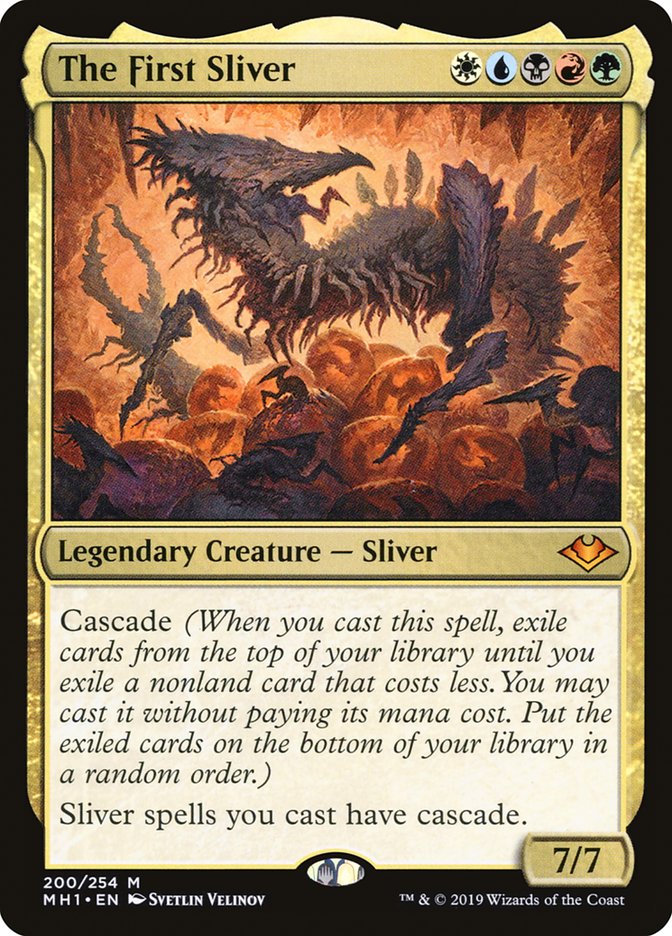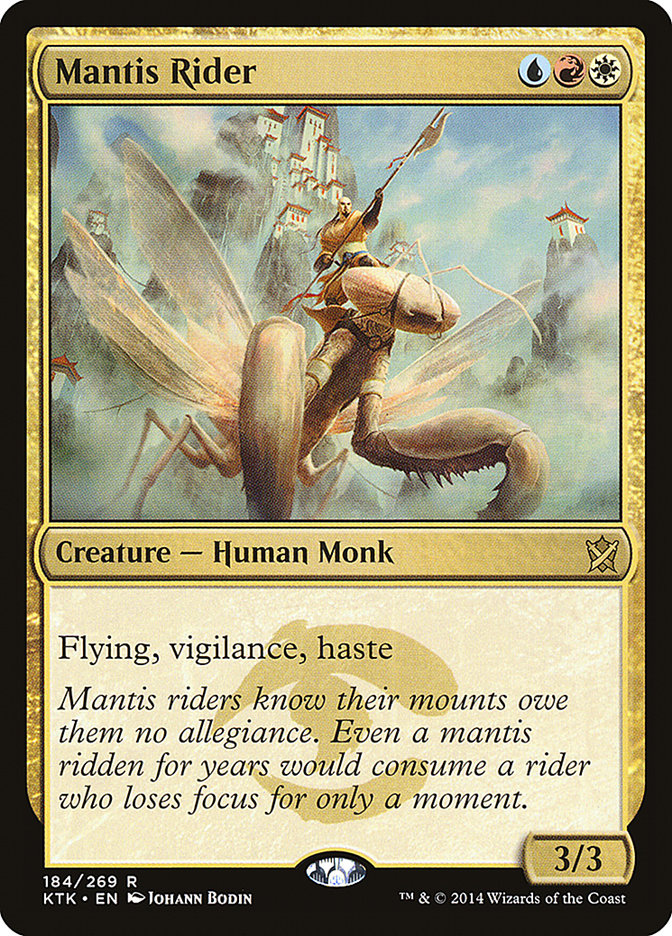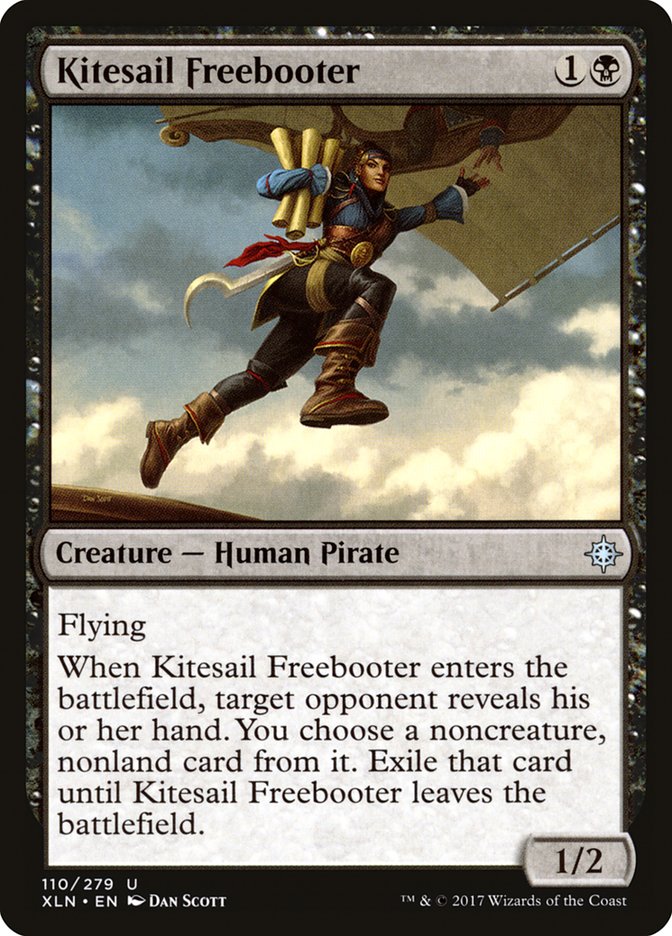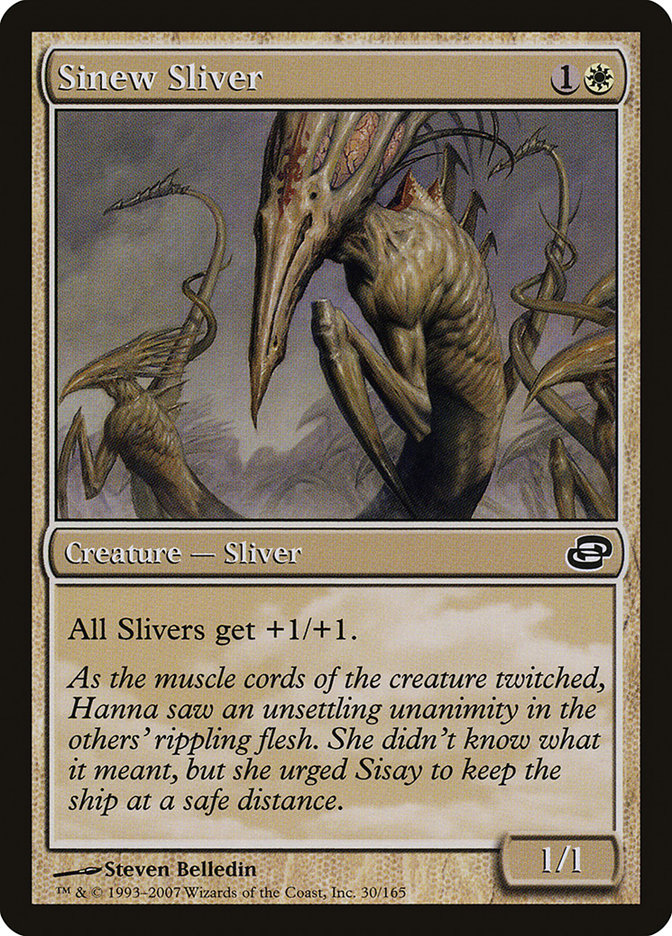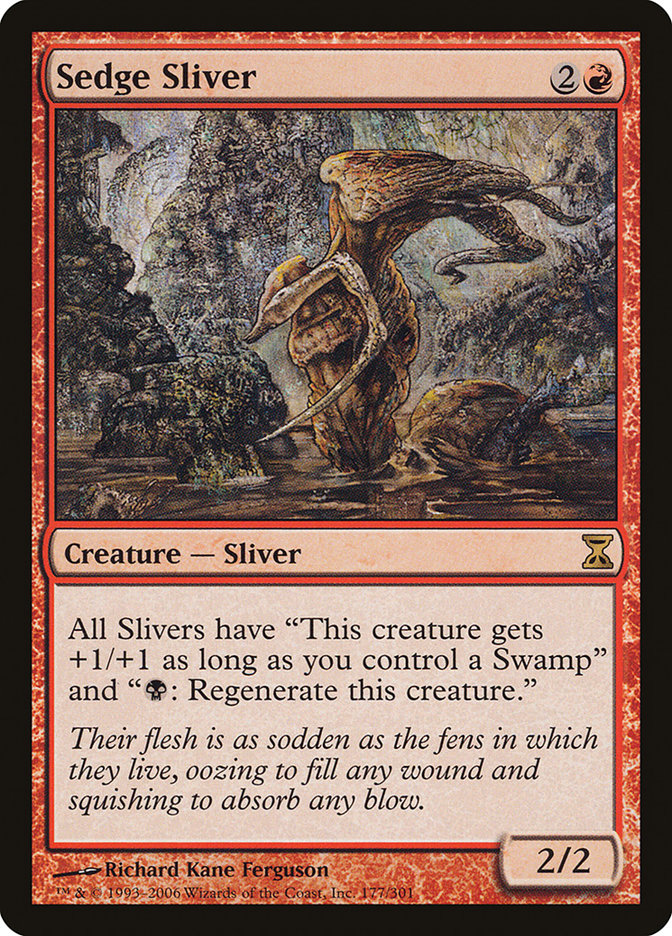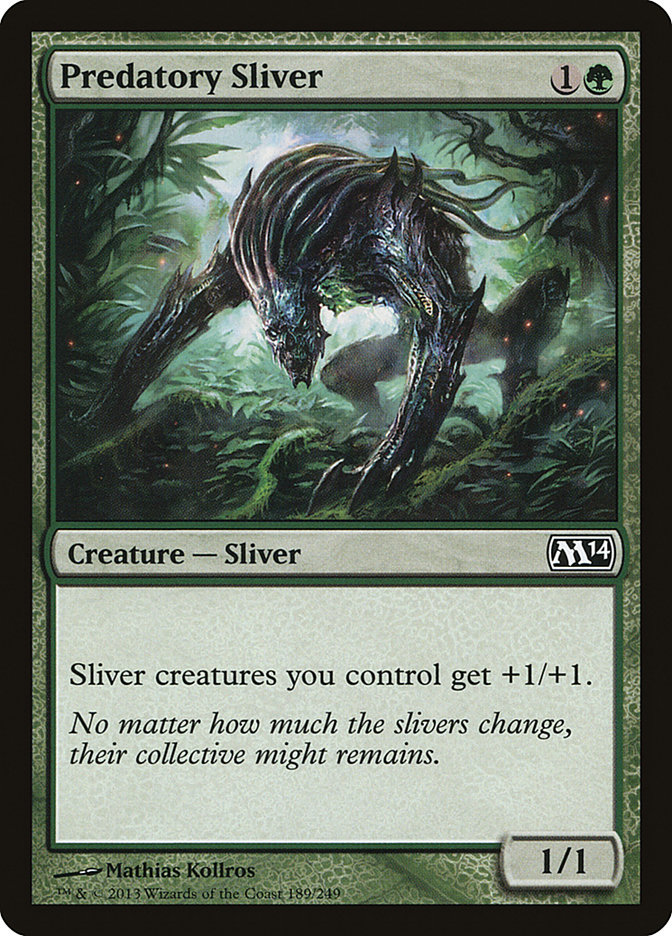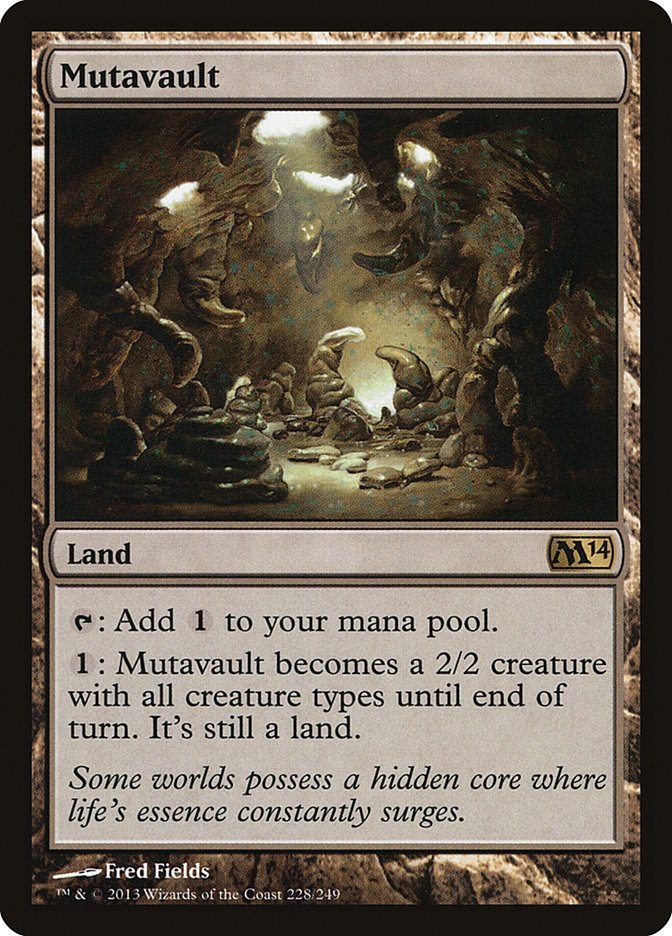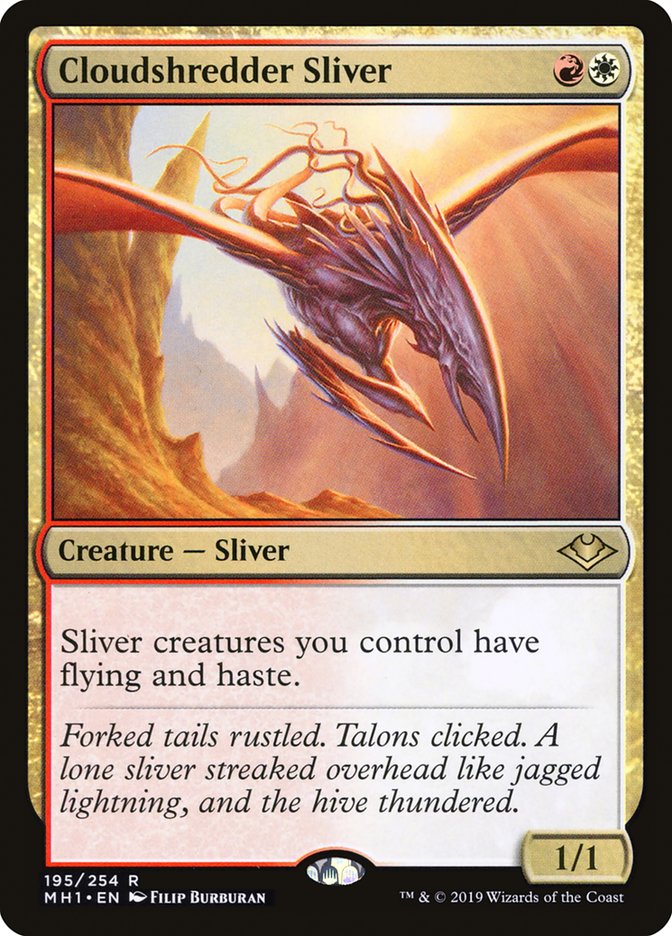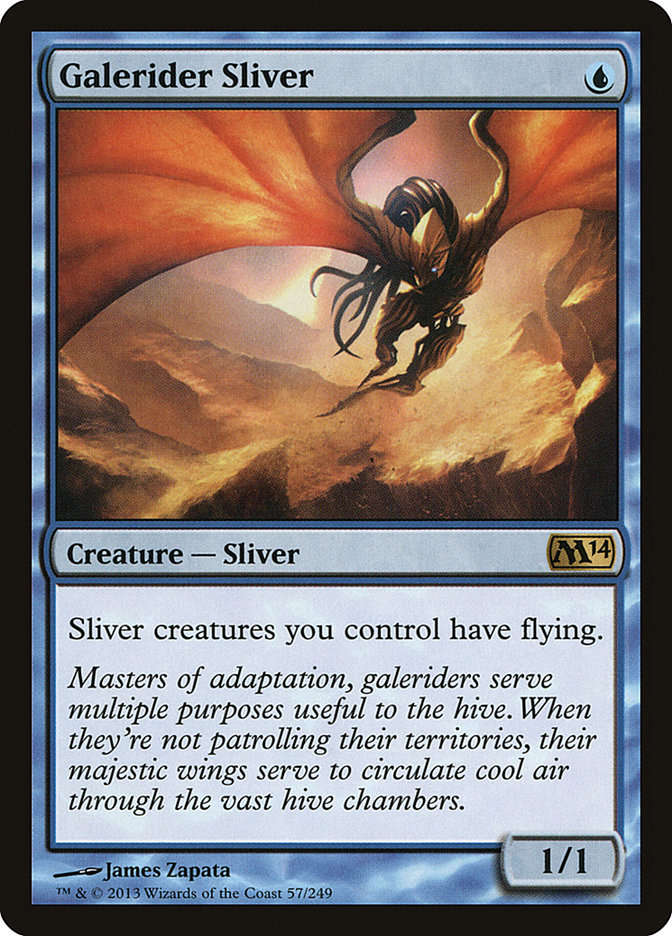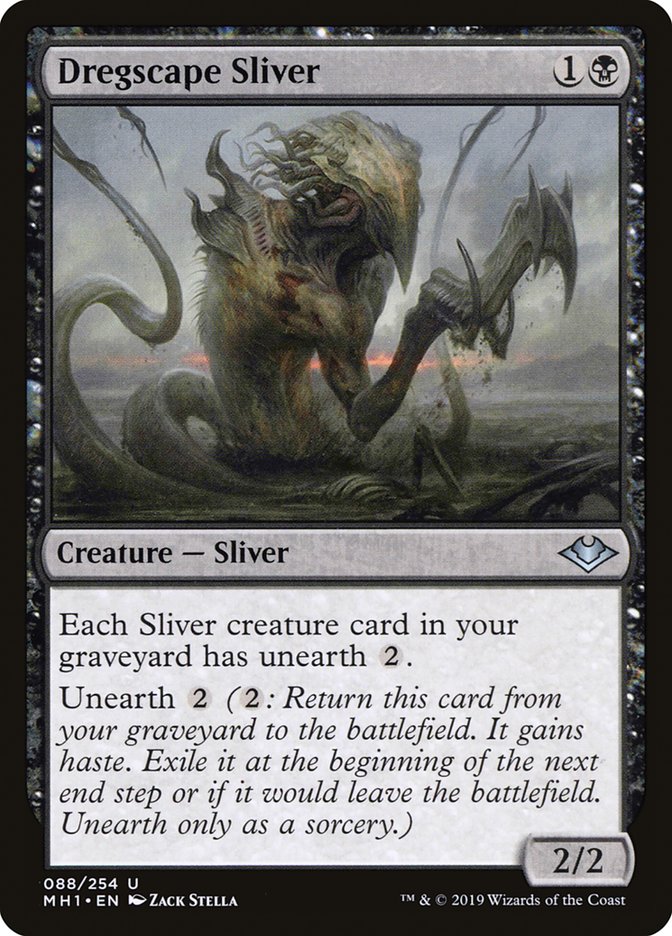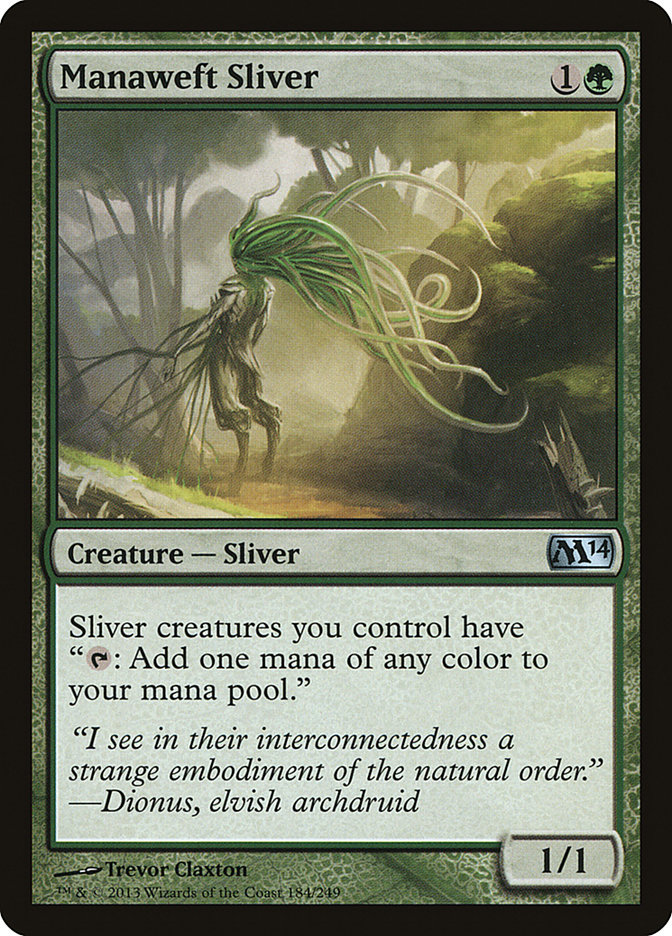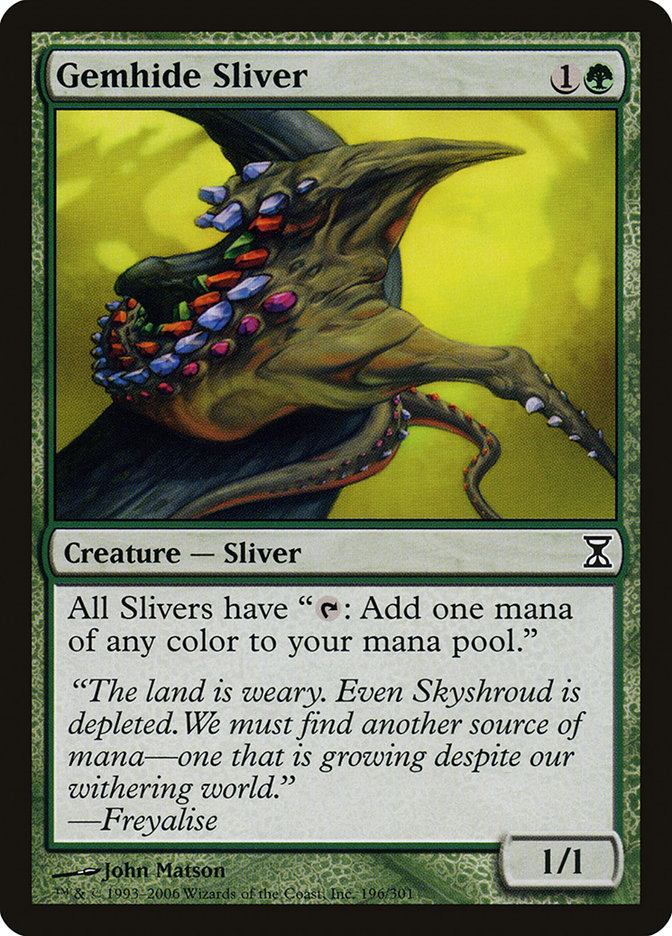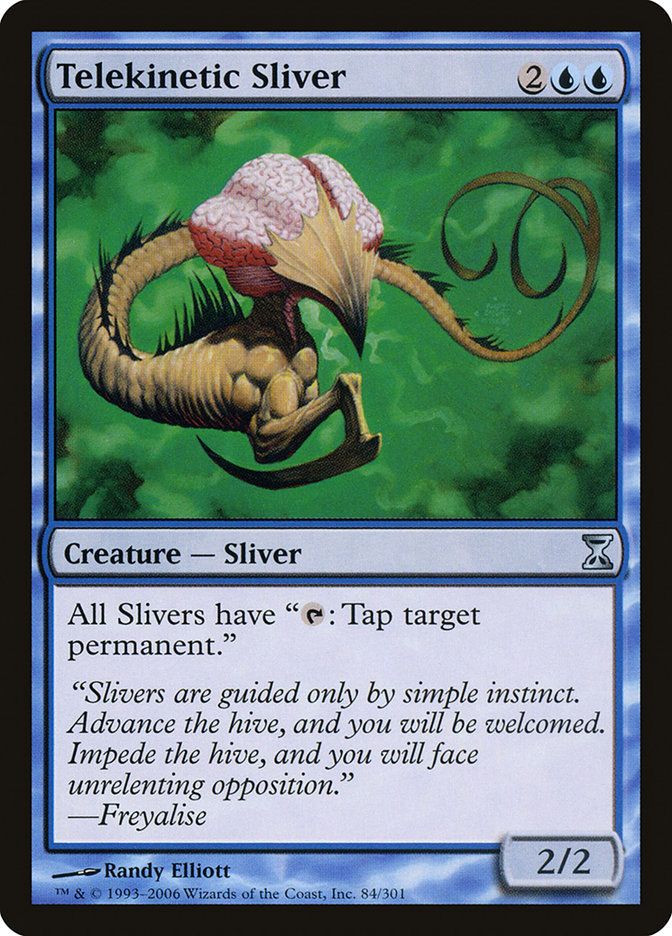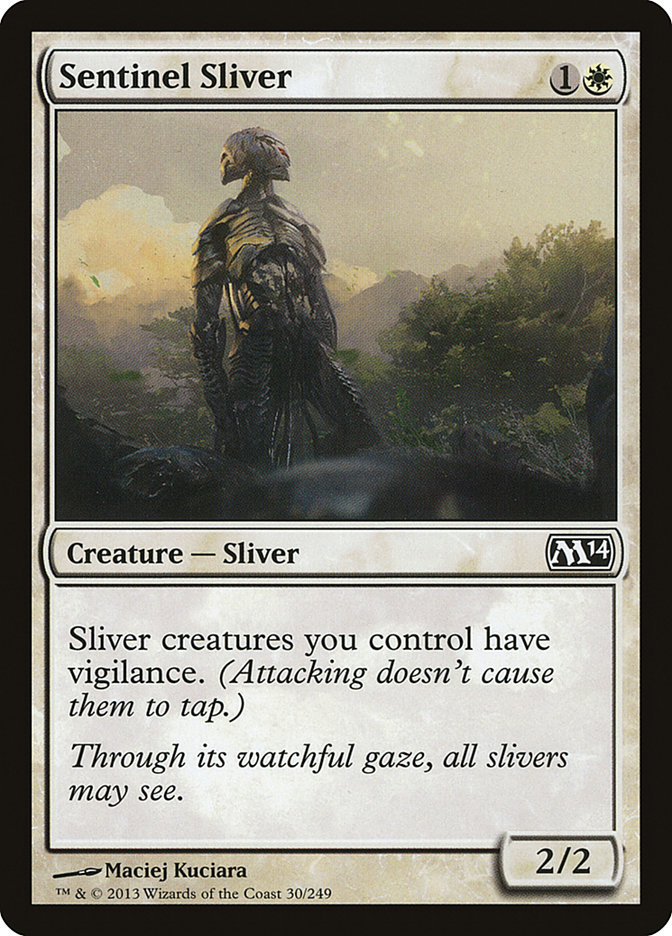One of my favorite things about Modern Horizons so far is how many of the cards and themes of the set are not only iconic, but nostalgic for players like me who are a little long in the tooth in planeswalker years. Cards like Giver of Runes, Astral Drift, and Force of Negation may lack some subtlety in the name department, but it almost adds to my excitement for the set.
There’s something about seeing these homages to past greats lined up next to awesome reprints like Fact or Fiction, Genesis, and Goblin Matron that really brings me back to a different time in Magic’s history. I would be shocked to hear if I were the first one to draw this comparison, but at its core, Modern Horizons looks and feels a lot like a Time Spiral block Part 2: old mechanics coming back on new designs in places they normally aren’t on the color pie, reprints of cards from yesteryear, and almost dangerously powerful additions to the game.
Oh, and Slivers.
One of the most distinctive and beloved creature types in Magic, Slivers have always had a special place in the hearts of many as the gateway to building tribal decks. Their design is one of elegance and simplicity: different Slivers make Slivers stronger in different ways, and the more Slivers you assemble, the better they all get.
This concept is so simple that even though I had only been playing Magic for a couple months at the time, when I saw the Slivers in Time Spiral I knew to jam every single one I’d opened in a booster pack into one deck. It was bound to be awesome! They’d all work together in harmony to become the unstoppable hive of creatures they were made to be! There would be no stopping them!
And predictably…it was awful.
All the Slivers I had were unplayable draft commons, and even though I only played casually against people at the comic book store near my house, I could never win no matter what I did. Ultimately, I came to the same conclusion everyone else does who has this experience once in their Magic career: Slivers suck.
While the verdict handed out by thirteen-year-old me may have been fair back then, a lot has changed over the last decade of Magic, including the humble Sliver. Contrary to what you might believe based on what you’ve read so far, the set is actually Modern Horizons, not Whatever-I’m-Nostalgic-About Horizons, so when I say we need to give the Sliver a second chance, make no mistake, I’m talking about giving it a spot on the big stage.
Some of you out there might think I’m crazy for even entertaining the thought, but before you write off the hive, let’s talk a bit about a different tribe that’s everywhere in Modern.
Creatures (37)
- 4 Meddling Mage
- 4 Noble Hierarch
- 4 Phantasmal Image
- 4 Champion of the Parish
- 4 Thalia, Guardian of Thraben
- 4 Mantis Rider
- 4 Reflector Mage
- 4 Thalia's Lieutenant
- 2 Thalia, Heretic Cathar
- 3 Kitesail Freebooter
Lands (19)
Spells (4)

For the last couple years, Humans has been steadily towards the top of the Modern metagame at large. A lot of this success is rooted in the near-evergreen nature of the Human creature type, as it gets printed on everything from effects ranging from Tidehollow Scullers to Lightning Angels to Man-o’-Wars. The wide variety of effects on Humans alongside a plethora of rainbow lands that make them all castable creates a diverse and well-rounded gameplan that covers lots of angles.
Between the flying and haste of Mantis Rider and the disruptive elements of Meddling Mage and Kitesail Freebooter, Humans has stayed two steps ahead of other Modern tribal decks like Merfolk in reach and disruption.
This axis of interaction has to come at a cost, though. Anyone who’s played their fair share of Humans can tell you that there are games where you draw the wrong half of your deck, run out of steam, or can’t quite kill on Turn 4.
These weaknesses of Humans are exactly why I think Slivers has room to sit at the table in Modern.
Much like Humans, Slivers has a large pool of cards to choose from that only gets larger as the years go by. While Humans may get the advantage of depth in the sense of disruptive elements, Slivers has the distinct advantage of depth in combat abilities.
For starters, Slivers has many more lords than Humans has access to, which gives it the kind of consistent goldfish Turn 4 kill we’re looking for. When it comes to speed and sizing, Slivers is way up there on the charts.
Sedge Sliver also makes some interesting incentives for the deck to play a different kind of manabase than Humans traditionally does. Due to the distinct need for Swamps and the lack of absurd mana costs, Slivers wants to play somewhat of a fetch/shock manabase like a more traditional Modern deck.
Once you’re no longer playing a rather restrictive land like Ancient Ziggurat, you gain a host of options for other things your deck can do besides cast creatures.
As two of the biggest boons to tribal creature decks in Modern Magic history, Mutavault and Collected Company are both welcome additions once you’re able to support the mana to use them. Not only do they help bring up the speed of the deck a little, they also heavily increase the resiliency required to play a purely aggressive creature deck in Modern.
Not only does the big manabase shift enable powerful cards like these, it also opens the door for potent sideboard hate cards like Rest in Peace, Stony Silence, or Alpine Moon to help make up for the lack of disruption Slivers can access.
Starting from a desire to build the deck that kills the most swiftly and most consistently, I wound up at this.
Creatures (32)
- 4 Sedge Sliver
- 4 Sinew Sliver
- 4 Phantasmal Image
- 4 Striking Sliver
- 4 Predatory Sliver
- 4 Galerider Sliver
- 4 Dregscape Sliver
- 4 Cloudshredder Sliver
Lands (20)
Spells (8)

There are only two new Slivers in this decklist, but I really think they make all the difference.
Before Modern Horizons, we had just Galerider Sliver as a way to provide real evasion for our Slivers to push through as a clock uncontested, but Cloudshredder Sliver is that and so much more. If Mantis Rider has taught us anything, it’s that two things make a strong threat in Modern: haste and flying.
The ability to skip the natural window of interaction for creatures that summoning sickness creates on a creature that cannot be blocked under most circumstances is inherently powerful. If your opponent casts something like Supreme Verdict, you can easily bounce back with a creature or two from your hand and push through damage immediately. This is where, as an aggressive tribal deck, Slivers has the edge over something like Merfolk.
Flying is of course one of the most simply underrated abilities in Magic, and with so little of combat happening in the air in Modern, Slivers can totally ignore problems that Reflector Mage has to solve for Humans, like Tarmogoyf or Scavenging Ooze.
The other really big addition to the hive from Modern Horizons is Dregscape Sliver. The first time I read the card, I wasn’t so certain it was good at all. Unearth is kind of strange, it’s just a 2/2, and it doesn’t immediately impact the battlefield.
That impression didn’t last long, as I realized that any time you have a Dregscape Sliver on the battlefield or in your graveyard, it’s like you have a miniature Patriarch’s Bidding just floating around. Your opponent can kill your creatures as much as they want, but for only four to six mana you can bring back two or three sizable attackers with haste from your graveyard to push through those last points of damage.
The card isn’t just a 2/2 with unearth – it’s a Sliverthat unearths more Slivers. That’s the golden rule! More Slivers mean my creatures are stronger! Bring back two Predatory Slivers and you’re attacking for ten that turn. Bring back a Galerider and a Sinew Sliver and that’s seven in the air. The resilience provided by just one copy of the card alone is astounding and should not be slept on.
Of course, being flat-out aggressive and resilient aren’t the only things you can do with Slivers. I wasn’t lying when I said the tribe had depth.
Manaweft Sliver and Gemhide Sliver at their floor are both just mana accelerants with a weird creature type, but at their ceiling, they’re Cryptolith Rite. The kind of mana advantage you can create with these two and a few other Slivers is huge.
Generally, in my creature decks, I only really want this kind of a mana advantage if I’m using it to end the game doing something like activating Ezuri, Renegade leader multiple times to attack for lethal. While Slivers doesn’t have anything quite like Ezuri that slots in perfectly, it does have one powerfully unfair Sliver in particular.
Telekenetic Sliver is the closest thing Modern has to Opposition, a card that despite Ross Merriam’s pleas on VS Live! is far too powerful for the format. Combine that with Sentinel Sliver, and suddenly you’ve got an army of vigilant Icy Manipulators tapping down all your opponent’s mana in their upkeep and slowly eating away at their life total.
While Zach Kiihne and I hit a wall when we were brainstorming ways to make this all fit together and I don’t exactly see myself playing a Telekinetic Sliver lock deck in a Modern tournament anytime soon, I bring it up to shed light on some of the untapped potential Slivers have as a tribe.
It only took Kitesail Freebooter and Phantasmal Image to assemble a critical mass of Humans and push a deck from unexpected and linear to diverse and flexible. So, too, does it only take one Sliver like a Crystalline Sliver to bring yet another tribe to the top tiers of Modern. We haven’t even seen every Sliver in Modern Horizons previewed and any of them could bring this beloved cornerstone of Magic creatures back to the top tables it once lived on in its heyday.
At the very least, for nostalgia’s sake, I’m holding on to a sliver of hope that they do.


